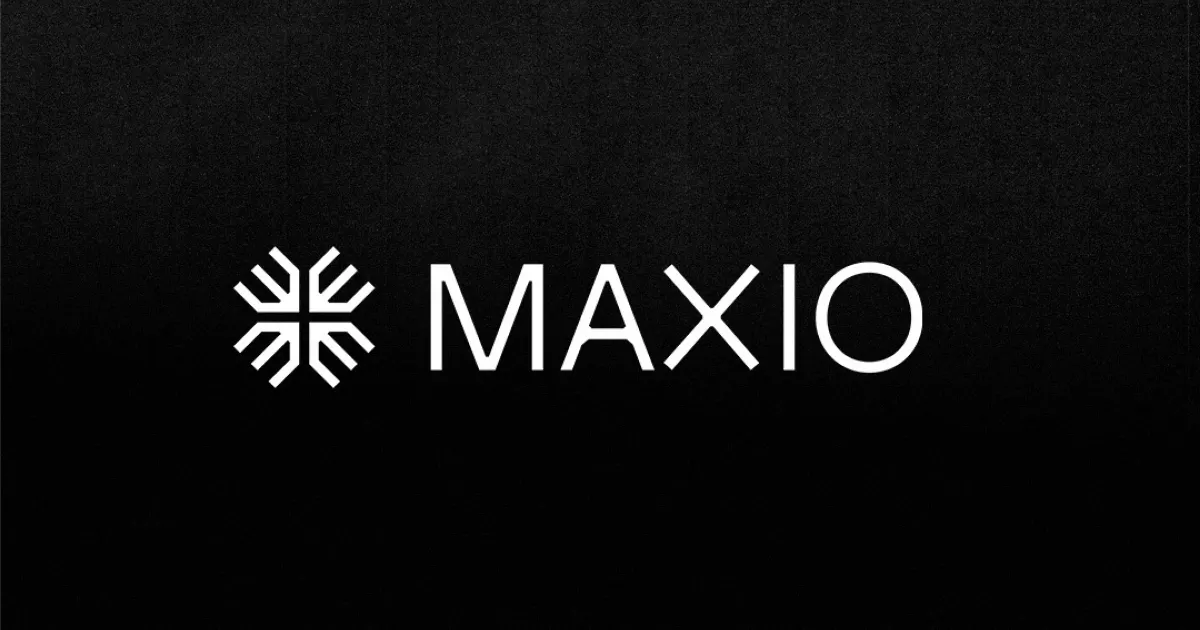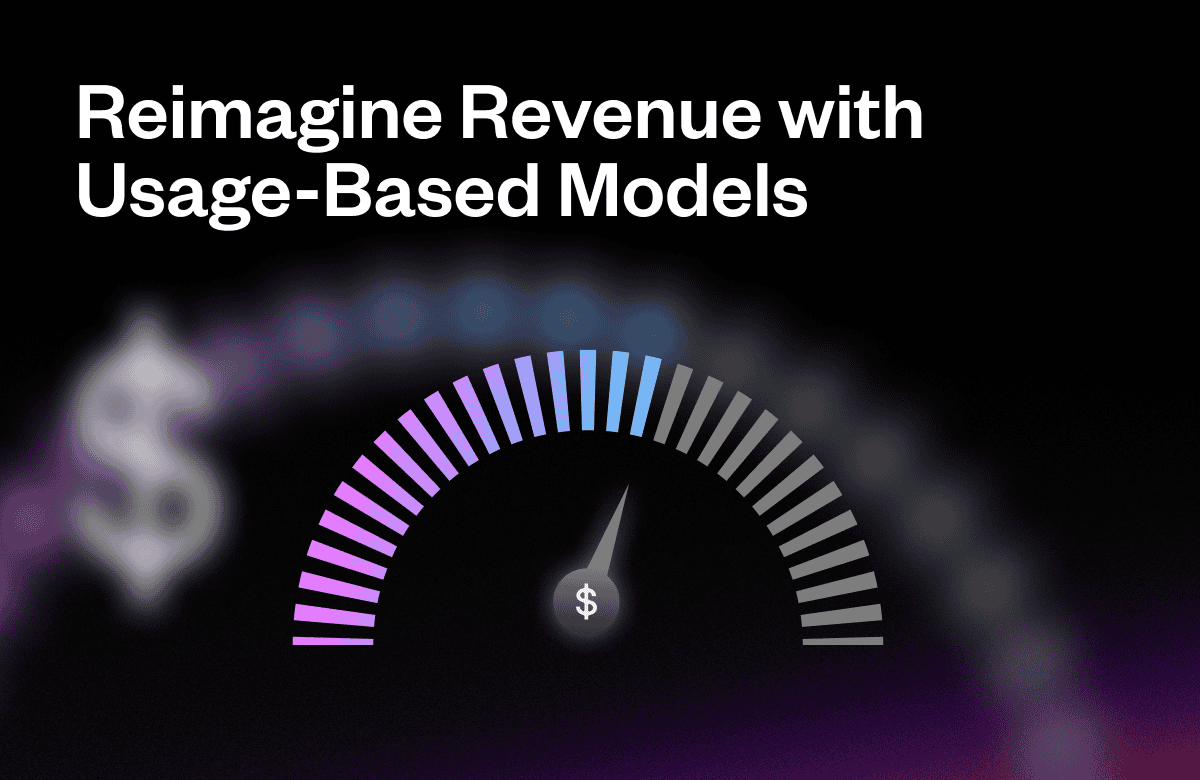Most SaaS companies adopt a free trial but these days many also find themselves muttering the “f word” and questioning . . .
“Should we go freemium?”
While freemium can propel a company to success, it can also suffocate a company’s financial and labor resources.
In Maxio’s early days, we got bit by the freemium dragon and learned from our mistakes – more about that in a bit.
In addition to reviewing the top pros and cons, we’ll share the keys that make the freemium model work well in the SaaS world. So how do you know if freemium is right for your specific SaaS business? Read on!
First, let’s agree on the basics:
Freemium is a pricing strategy in which you give away a part of your product (with restrictions) for free while offering your premium product (or service) for a cost. While the free product or service is usually limited in scope (i.e. you are restricted by the number of features or users), the time duration the user can utilize it is unlimited.
This in contrast to the free trial, in which the user is able to trial the full product or service at no cost for a limited time. In the SaaS world, free trials are typically 14 or 30 days, but can last as long as 60 days. At the end of the trial, the user is faced with a purchase decision – buy or move on.
While the free trial has become the de facto standard in the SaaS world, many companies use a freemium offering to lure in users and funnel them into a premium, paid product. But it doesn’t always work out.
SaaS Freemium Breakdown: The Good, The Bad, and the Ass Backwards
First, the good . . .
#1 Drives Traffic (and Virality)
Everyone loves free stuff! A free offering allows you to create a large user base. How large? In 2014 there were more CandyCrush users than there were people living in Australia.
Countries that have less people than total CandyCrush users are represented in red below.
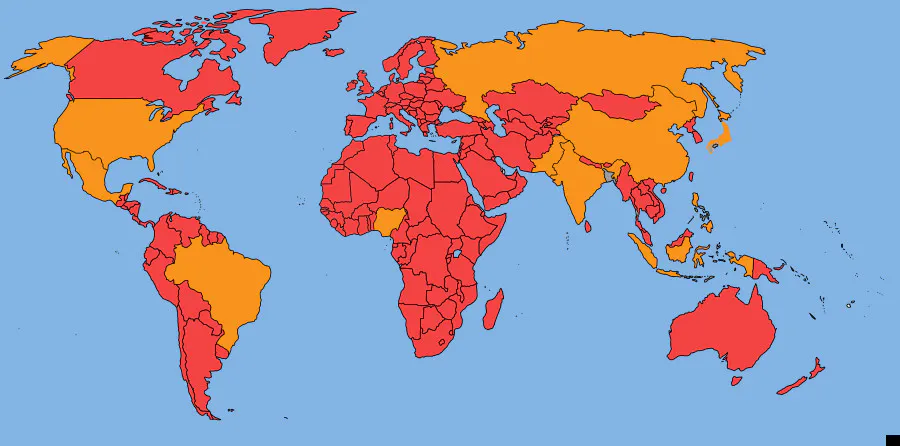
Driving traffic and the creation of a large user group are among the many reasons new ventures like the freemium model.
Providing a free product or service is a potent marketing tool and less expensive than traditional sales teams or ad campaigns. On top of the free offering, many companies give rewards for user referrals, further increasing the user base in addition to gaining more media coverage and virality.
Dropbox is the undisputed king of successful referral marketing. According to Dropbox founder Drew Houston, their referral incentive structure was inspired by PayPal’s “refer-a-friend” program.
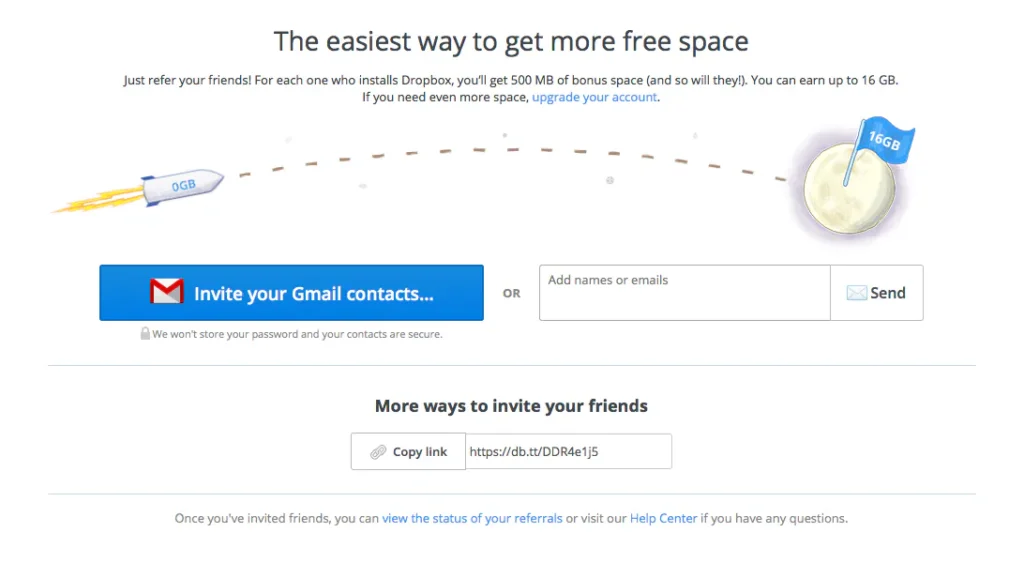
PayPal’s program paid referrers cash, and DropBox was inspired to give extra storage to both the referrer and the new user. It is a win-win, and both users become more invested in Dropbox’s product!
The invitation to refer was baked right into the account setup, and was cleverly worded as an invitation to “Get more free space.” According to Houston, referrals increased sign ups by 60% through their referral program.
#2 Gather usage data and feedback to refine your product
When your company is just getting off the ground, getting your first 100 or so customers is mission critical. You will do anything, including giving your product away, to get those first users.
Then you can see how they interact with your product, gather feedback, and continuously improve.
While freemium may be short lived in this case, it may also shed light on what features can be given away and what features users are willing to pay for.
Serial entrepreneur David Skok calls this the “wow moment” . . .
Wow! is the moment in a free trial where your buyer suddenly sees the benefit they get from using your product, and says to themselves “Wow! This is great!”. It’s also the moment where you have converted them into a fan who is likely to buy.
If you’re going to use free trial (or freemium) as a key part of sales funnel, it pays to understand exactly where in the free trial experience your buyer says “Wow!”.
#3 Path to Monetization

Hubspot’s signature free product is their CRM, highly praised by critics and consumers alike. This very successful freemium helps introduce users to Hubspot and their larger suite of paid products.
Hubspot’s Brad Coffey explains the CRM’s clear path to monetization for the company:
“We have a unique opportunity to monetize the CRM effectively for two reasons. First, because we already have thousands of customers on our platform, we’ve solved many of the cost and scaling issues that would otherwise make delivering a free CRM cost prohibitive. Second, we already sell software. Our inbound marketing platform is an effective way to get more leads into your CRM, and works great with the CRM. It’s a great upgrade path for CRM users creating sustainable lifetime total value (LTV).”
Another popular path to monetization draws users in through a free offering in order to convert users wanting more robust features to the premium product.
While I was writing this post I received an email from BuzzSumo that is the perfect example of this monetization path (how’s that for convenient?!):
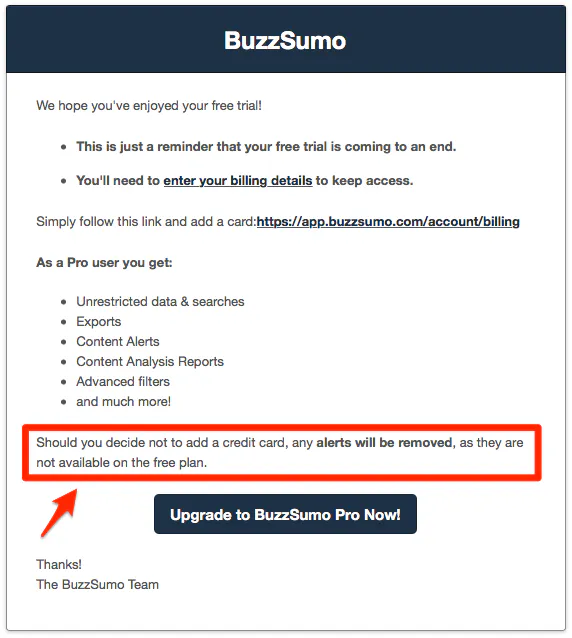
Over the past two weeks, I have been testing out Buzzsumo. This email lets me know that if I don’t upgrade to the premium product at the end of the trial there is a free plan, but the plan doesn’t include any of the alerts I’ve set up.
And the alerts are one of my favorite features. In order to continue to have access to the more robust features, I’ll have to upgrade to the premium plan – they got me!
Free plans do have their drawbacks. Let’s look at the biggest problems….
#1 Free isn’t 100% free
There are always costs to supporting your product!
A few weeks after Baremetrics introduced a free offering:
- “free” customers were outnumbering “paying” customers
- the amount of data customers were storing and processing had doubled
- the number of customers they were supporting tripled
In their blog detailing their free plan failure they explain, “When your available resources, whether it be team size, performance caps or money, are tight, then “free” has a real possibility of causing more damage than providing any real benefit.”
As a result of increased operational issues (down time, delayed data, and inaccurate metrics) plus a deteriorating support experience (increased load stretching support team too thin), churn doubled, negating any benefits from the freemium offer.
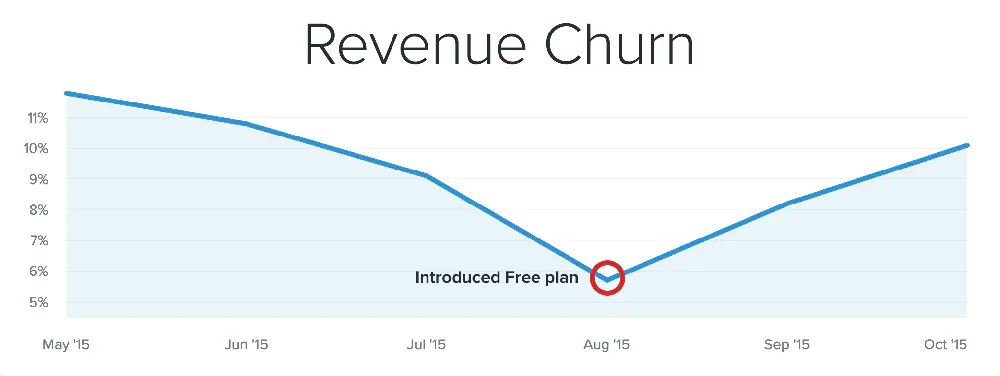
#2 More users does NOT equal more profit
Having tens of thousands of users who never have any intention of paying you is really just having a free product, not a freemium.
There can be a psychological component when you hook new users with “free forever.” The hook can create users who don’t ever envision paying, and don’t see your products as having value worth paying for.
To be successful, there needs to be enough value in the free product for users to love it and tell others about it, but even more value to persuade an upgrade conversion at some point.
But there wouldn’t be so many companies with free product offerings if freemium was all bad, right?

Is your SaaS ready for freemium success?
There are specific elements that make the freemium model work well in SaaS. Without these elements, a freemium product could stall growth potential.
#1 Keep. It. Simple.
The goal with the simplicity of the product is for customers to be able to learn and utilize the product without requiring hands-on support.
In addition to taking up scarce support resources, products with a steep learning curve often require training resources to drive adoption.
If users have a difficult time getting started or don’t immediately see your product as a solution to their problems or needs then they won’t see any value in it, if they use it at all.
This is where excellent documentation, user experience, and onboarding come into play. Slack mastered the “Keep. It. Simple.” concept to become one of the fastest growing B2B SaaS businesses.
One reviewer raves “Slack has done for collaboration what Google did for search – provided a user-friendly, easily accessible, clutter-free and intuitive service.” In doing so they’ve experienced unprecedented user growth.

#2 Leave the user needing more
There are a couple of ways to accomplish this:
The first is to start the user with your free product, knowing the user will outgrow the limitations of the free product shortly.
This allows the user to become too involved to want to stop using your product. The concept is called “stickiness,” and stickiness has been instrumental in the success of many companies such as Dropbox and Evernote.
With the Dropbox example, once the free user starts adding docs, photos, videos, etc. they quickly outgrow the storage limitations and need (even want!) to upgrade for additional storage.
Hootsuite also does this well. Their free plan allows for 3 social media profiles. Once a user wants to add another (and most companies do) they have to move to a paid plan to do so.
The second way to leave the user wanting more is to start by giving a free trial of your premium product. At end of trial the user can choose to downgrade to your freemium (and loose some of the tools they’ve grown accustomed to) or begin paying for the premium plan.
Groove leverages this concept extremely well. When you sign up for the freemium plan, Groove gives you a 30-day trial of their Groove Plus plan. Here is a note from Groove’s pricing page:

At the end of the premium free trial, the user can move to the free plan, but they may have found enough value in the premium features to sway their decision to buy….
#3 Organizations are the key
For long term success you need a path to go from the individual account to the team/organization account. Hubspot’s Brian Balfour explains:
“Because that’s where this model freakin’ takes off. And so you see this with Dropbox and Evernote – they start with the individual, they got power user plans and now they’re expanding into the organization and they can get those organizations much more efficiently because they have a bunch of individuals already on that product.”
Remember the Slack example?
Slack’s free product accommodates the majority of its users (around 800,000), with the average user actively engaging with Slack more than two hours every day.
These engrossed users lead to organization accounts, becoming paying users adding more than $25 million in annual recurring revenue (ARR or “the gift that keeps giving”).
This is another place Hootsuite excels. According to Hootsuite’s CEO, Ryan Holmes, “On average more than half our paying customers, including large clients, start out as free users.”
Hootsuite provides a wildly popular freemium offer geared towards individuals, with an upgrade path to introduce Hootsuite tools into an organization:

#4 Loyalty = Recurring Revenue
In conjunction with the path to organization accounts, your product needs to have a high long term retention rate because the “bread and butter” of most SaaS is Monthly Recurring Revenue (MRR) or Annual Recurring Revenue (ARR). Your product needs to create loyal users who stick around for the long run.
For example, active free users of Evernote come to rely on the product and become willing to pay for it.
According to Evernote’s CEO, Phil Libin, users were 8x more likely to convert into premium subscribers after a year of using the product than they were after using it for only a month.
#5 Are your servers and code ready for the flood?
One thing is certain, a sound freemium offer can dramatically increase sign ups and usage. But if your company is not ready for a flood of new users, the end result can be disastrous.
Revisiting the Baremetrics example . . .
Josh Pigford, founder of Baremetrics, said:
“Within a few weeks our “free” customers were outnumbering our “paying” customers and the amount of data were both storing and processing had doubled…We were dealing with day-after-day and week-after-week of progressively more complex server and performance issues as we just kept piling on the new free accounts.”
After releasing their freemium offer in August, they were plagued with outages and database issues through September and October.
Before even considering a freemium offer, you have to ask yourself: If I doubled or tripled the number of customers today, can my application handle it?
When should you implement your free plan?
Freemiums are most commonly associated with startups. Free plans are attractive to SaaS companies early on in their life cycle when the company needs data from a large customer base, customer feedback, marketing/exposure, and gaining those via a free product allows available resources and capital to continue to improve upon the product.
Later in the company’s life cycle, many companies reevaluate to determine if offering a free plan still makes sense for the company.
We went through this at Maxio. Check out our pricing page circa 2010:

When Maxio initially launched in 2009, we offered a free plan for companies with less than 50 paying customers.
A year later we had to reevaluate and concluded that model wasn’t viable long term. With increasing support costs and less than ideal free to paid conversions, we made the difficult decision to move away from our initial free offering to premium.
So what happened when we removed our freemium offer? MRR increased by over 300% within a month.
In hindsight, we could have used some of the advice from above to make our initial freemium offer more effective, but it did what it was supposed to do in the early days – gave us great exposure, drove traffic, and gave us invaluable usage data and feedback to refine our product.
Today we offer a modified free plan in the form of a free sandbox account. A business can test Maxio features and compatibility for free and move to premium when they are ready to go live and add subscribers.
In contrast, established companies who have built up a product people love enough to pay for, have a steady profit, and confidence there is “a viral engine of growth” in the product may also want to consider introducing a free plan later in their business life cycle.
“bass-ackwards approach to freemium” *

For almost 9 years Mailchimp utilized only the premium pricing model before coming out with a free offering in September 2009. A year later the number of paying customers had increased 150% and profit had increased over 650%. Last year MailChimp reported having just under 3 million new users.
Mailchimp co-founder/CEO, Ben Chestnut, explains:
“We spent years building up a powerful, affordable, profitable, self-serve product. We invested heavily in our API. We got smarter at deliverability, scalability, and abuse prevention. Then, the cloud made all of the above even cheaper. We took advantage of those savings and made stuff free.
A side benefit of taking our bass-ackwards approach to freemium is that we don’t think of our free users as pesky, bandwidth-hogging “freeloaders” that we have to monetize in some way. We love them just as much as the people who pay us money. Because we have the data that shows they will pay us money.”
And when you have the success Mailchimp has enjoyed, what’s not to love?
But the question remains, is freemium right for your SaaS company?
Regardless of where you are in the SaaS life cycle, let’s review the elements your freemium needs to have to succeed:
Your product is simple, user-friendly, and intuitive. This means you have excellent documentation, an intuitive user experience, and onboarding to help a user get started without needing hands-on support.
Your free plan will provide value, but there is a clear upgrade path. You can either provide limitations that will be reached in a reasonable time frame (storage, number of users, etc.) or tantalizing, premium features that users are willing to pay for once their needs grow.
Your free plan will be loved by the individual user or small team, who will want to introduce it to larger teams or the entire organization.
Your product has loyal users who log in frequently, are engaged, and stick around for the long term.
Your company’s infrastructure is scalable, and able to handle a flood of new accounts at any moment.
If you can check off the points above (it’s interactive so you can actually put a check in each box), congratulations! Your SaaS could be holding the winning freemium product.
Will a freemium plan be the growth lever for your company’s success?
Shameless Plug
If you have a SaaS company, Maxio provides billing software that will streamline your subscription management and recurring billing.
Maxio is trusted and loved by thousands of companies, and supports all the popular billing scenarios (including freemium!). Check out Maxio to take the grunt work out of running a subscription business so you can focus on what’s most important – growth.

